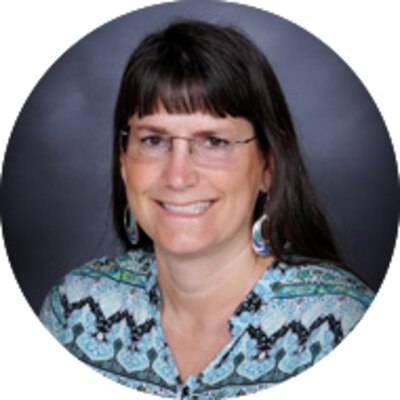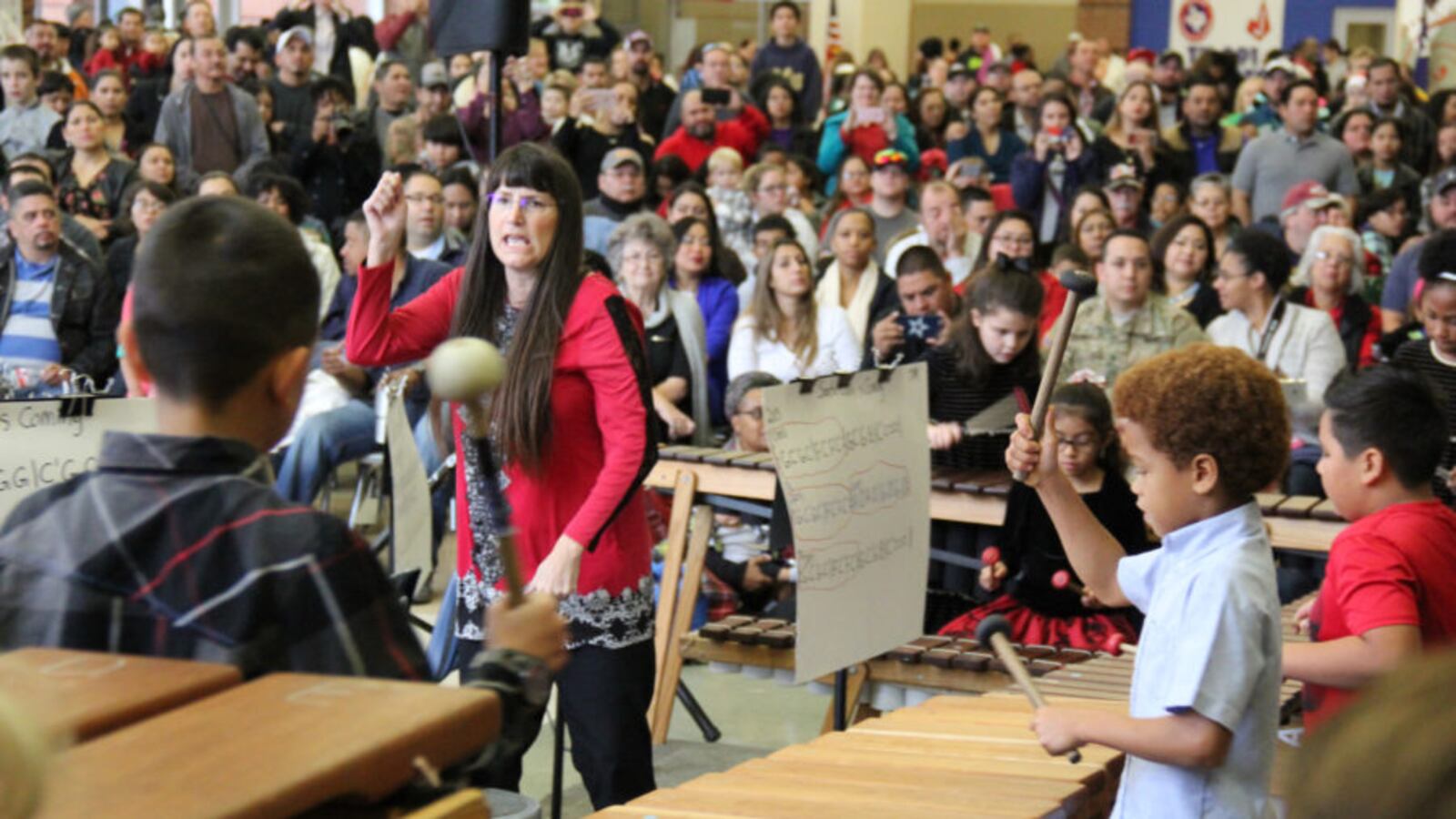Here, in a feature we call How I Teach, we ask educators who’ve been recognized for their work how they approach their jobs. You can see other pieces in the series here.
As soon as Bonnie Anderson heard the sounds of the marimba, her life changed.
She already had been teaching music for a decade. But when she came across students performing alongside Walt Hampton, a percussionist and music educator famous for popularizing the Zimbabwean-style instrument through his publications, at a conference 16 years ago, she had a sense that she should do something different in her classes.
“I was blown away and knew students would connect with the marimba,” Anderson said of the percussion instrument, which looks like a large xylophone made of wooden bars.
The instrument is now the centerpiece of her work with about 370 students at Coronado Village Elementary School in San Antonio. The campus serves a large population of students of color, and the marimba’s roots in Africa and Latin America offer a way into that history — and a way for students to learn how to work well together.
“Playing in a marimba band teaches you a lot about teamwork, because if someone is having a bad day or struggling with learning, that will impact the performance, and I push the students to work it out,” Anderson said.
“For students who spend so much time on electronic devices, and struggle with knowing how to better interact with others, playing instruments together can help get them moving and learning how to play well with others in preparation for the outside world.”
Anderson has been named a top music educator by the Grammy Foundation and won a lifetime achievement award from the Texas-based H‑E‑B Excellence in Education Awards, with a $50,000 prize she shared with her school.
We spoke to Anderson about how a bad experience as an elementary student motivated her to teach the same grades and the unexpected lessons she’s learned from working with tough parents.
Was there a moment when you decided to become a teacher?
I decided to become a teacher when I was in second grade. My teacher that year was mean — not just strict, but mean. She even had a sort of three-walled vestibule built for me and put my desk in it so that I couldn’t see the other students. I was there most of the year. Even though my self-esteem plummeted, I was determined to become a teacher so that I could be a nice one, as my first-grade one was. Now I see a little bit of myself in every child with a behavior problem.

How do you get to know your students?
By making myself available to them. Students can come into my room to practice or get help before and after school. Sometimes they are able to come during my conference or lunch. That is my chance to get to know them on a different level outside of class time. I also make myself more approachable by treating students with respect, even if they aren’t respectful back. I don’t talk down to them or insult them. Finally, I observe them. I try to stay attuned to minor changes in their behavior, so that I can intervene to find out if something is wrong.
Tell us a favorite lesson to teach. Where did the idea come from?
Almost everything I do, I “stole” from someone else. However, my favorite lessons are the ones that I created. I have a lesson for improving steady beat using the “Washington Post March.” I use a poster I made with four lines. The first line has four hand drums, the second has four tambourines, the third has four pairs of claves, and the last has four pairs of maracas. The students sit in four rows with a different instrument in each row, in the same order of the poster. I play the recording and I point to their instrument on the steady beat. They are supposed to play when I point to their instrument on the poster. My favorite part is the look of joy on their faces when they finally all play together.
What object would you be helpless without during the school day?
I would be helpless without my “slow it down machine,” a special CD player that changes the tempo without changing the key. Many recordings are too fast, even the ones designed for children to play along with.
What’s something happening in the community that affects what goes on inside your class?
Although I consider San Antonio my home community, our school is located in [the adjacent] Universal City. Universal City is an amazing community! Their Facebook page is filled with neighbors helping neighbors. When we raised money to take the students to perform at Carnegie Hall, the community overwhelmed us with their generosity. Not only has our involvement in the community affected my classroom, but it has given the students a sense of identity and responsibility in the community. Often when Universal City is in need of volunteers, my students come to me and ask if we can help.
Tell us about a memorable time – good or bad – when contact with a students’ family changed your perspective or approach?
The parents in my school (especially dual language parents) are overly involved. We had a dual language student in our school who appeared to be very spoiled by her grandmother, who was raising her. I had decided that I didn’t care for either of them and I had butted heads with them many times. After two years, I realized that she was extremely musically talented.
As I took the time to get to know her and her grandmother, I began to understand why they were the way they were. The student had endured some hardships in her younger years and the grandmother was having a hard time being a parent when she really wanted to be a grandmother. Once I forgot to buy an outfit for a very special event for Cinco de Mayo. She dropped everything to go shopping for me while I was working. She kept sending me pictures back and forth until we found something I liked and then she wouldn’t let me pay her back. I learned from her that parents really want to be involved and help if you let them.
What part of your job is most difficult?
My teaching methods are very non-traditional. Most people assume that if it is a state standard then it must be for the best. When I have real discussions with colleagues about certain standards that aren’t in the best interest of the students, they are often appalled that I would dare disagree with a state or national standard.
What was your biggest misconception that you initially brought to teaching?
My biggest misconception was that experience didn’t matter. I foolishly thought that I didn’t need experience to be a great teacher. Boy was I wrong.
What’s the best advice you’ve received about teaching?
The best advice came from the person whom I consider to be my mentor, Walt Hampton. (He taught me how to start my own marimba program.) He showed me that students at the elementary level should be experiencing music, not learning standard notation. Reading standardized notation is more appropriate at the secondary level, when they have their instrument in their hand every day. Some of the best musicians in the world learn music without standard notation.
The techniques I use allow elementary students to get up and start making meaningful music quickly and kindles a desire for them to learn more. Best of all, it fires up their interest.


